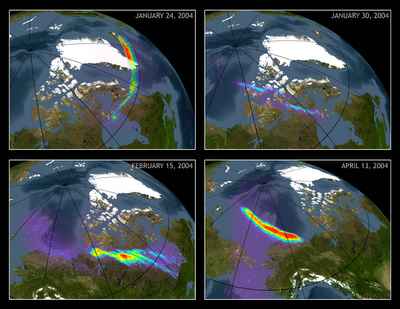For the first time, scientists decided to direct the instruments of the telescope, which is used to explore deep space, towards the Earth
Avi Blizovsky

Weak bursts of X-rays are produced during auroral activity. Photo: NASA
A team of scientists observed Earth's northern polar region ten times over a four-month period in 2004. As the bright arcs in these example images show, they detected low-energy X-rays (0.1 to 10 kiloelectron volts) produced during auroral events. Other satellites that photographed the Earth's auroras detected only high-energy X-rays.
The images, seen here in conjunction with a superimposed image of Earth, are taken from a series of 20-minute scans in which the Chandra satellite, normally used to search for X-rays in deep space, focused on a single point in Earth's sky as the Earth's motion carried the aurora region within the satellite's field of view. The color code of the X-ray arcs represents the X-ray brightness, with maximum brightness represented in red.
Auroral events are created when solar storms emit clouds of energetically charged particles. These particles are splashed when they encounter the Earth's magnetic field, but as part of this process a huge electric current is created. The electrons trapped in the Earth's magnetic field are accelerated by this current and swirl along the magnetic field to the polar regions, where they collide with atoms in the upper atmosphere and create the glow, during which they also emit X-rays.
For a NASA press release on the Universe Today website
Earth scientist - planet
https://www.hayadan.org.il/BuildaGate4/general2/data_card.php?Cat=~~~362263626~~~138&SiteName=hayadan
